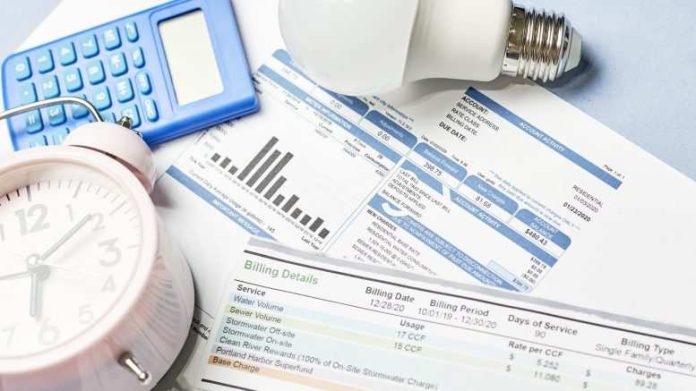
When it comes to handling the cost of bills, a lot of people can struggle. If you find yourself in the same position, then you’re not alone. So many people have found themselves in need, that the government realized they could use the support! The government created the Low Income Home Energy Assistance Program (LIHEAP). Sadly, plenty of people don’t realize that this program exists. Luckily, this article will be able to provide some helpful information on this program and can point you in the right direction if you want to benefit from this opportunity.
What is LIHEAP?
LIHEAP is a program that was designed to help qualifying low-income Americans. The managing agency of this support opportunity is the United States Department of Health and Human Services (HHS). However, there are local and state LIHEAP offices that have the responsibility of managing and administering the program. This program can assist those that qualify with their:
- Heating energy costs
- Cooling energy costs
- Bill payment
- Energy-related home repairs
- Energy crisis support
But it can help with even more support than what was listed! Keep in mind that this program will typically not help with water and sewer bills. However, there can be exceptions. For example, an exception could be when water is used for air conditioning. In this case, LIHEAP funds could go towards paying for water bills.
Who Qualifies for LIHEAP?
Not everyone will be eligible to benefit from this program. Instead, only those that meet specific qualifications can get support. There are a variety of ways that a person may be able to consider themselves eligible. For example, a person may automatically qualify for LIHEAP if they are also a participant in other government programs like:
- Supplemental Nutrition Assistance Program (SNAP)
- Supplemental Security Income (SSI)
- Temporary Assistance for Needy Families (TANF)
However, even if you aren’t a participant in a qualifying program, you can still qualify. You just need to make sure your income isn’t too high. There are annual household income limits that you must stay within. It’s important to keep in mind that the following limits are for income before taxes:
- 1 person household has an annual income limit of $22,590
- 2 person household has an annual income limit of $30,660
- 3 person household has an annual income limit of $38,730
- 4 person household has an annual income limit of $46,800
- 5 person household has an annual income limit of $54,870
- 6 person household has an annual income limit of $62,940
- 7 person household has an annual income limit of $71,010
- 8 person household has an annual income limit of $79,080
- For households of more than 8 people, they can add an extra $8,070 per person past 8.
While the list above is a great place to start when it comes to information, the way to make sure you have the most accurate and up-to-date information is by checking with the managing agency of this program for your area.
How to Apply for LIHEAP?
If you want to apply for this program then you want to keep in mind that the process will vary by state. You will want to get in touch with your local LIHEAP office for more information. If you are having a hard time getting in touch with someone at your local LIHEAP office then you can also reach out to the LIHEAP office for your state.
You will not be able to send your application directly to the government. That’s because the government isn’t the one to provide this support directly. Instead, states receive funding to operate LIHEAP.
Commonly Asked Questions About LIHEAP
When people hear of a support program, they may have questions that come to mind. If you are in the same boat, then these frequently asked questions may be able to provide you with some context!
Can LIHEAP Pay for Your Entire Utility Bill?
Most likely this program will not be able to handle all of your energy costs. That’s because LIHEAP is not designed to do that! Oftentimes, recipients can only get help from their main heating source. So for example, if your main heating source was gas, then this program may be able to help with your gas bill but not your electricity bill.
How Can LIHEAP Reduce Your Energy Bills Moving Forward?
Through energy-related home repairs (also known as weatherization), this program may be able to help recipients save on their energy bills moving forward. Some common types of repairs include:
- Fixing leaky doors
- Fixing leaky windows
- Installing insulation
- Fixing broken or inefficient heating or cooling devices
- Replacing broken or inefficient heating or cooling devices
Other Programs That Can Help
Besides LIHEAP, other programs may be able to assist. We will discuss some of the programs that may be able to automatically qualify you for LIHEAP if you are a recipient. Some of these types of programs include:
- Supplemental Nutrition Assistance Program (SNAP)
- Supplemental Security Income (SSI)
- Temporary Assistance for Needy Families (TANF)
Supplemental Nutrition Assistance Program (SNAP)
While utilities are a common bill that people deal with, so are groceries! That is why the government also offers this food support opportunity. Through SNAP, qualifying recipients can get an Electronic Benefit Transfer (EBT) card. Every month, this card will get funds that can go towards qualifying food items at stores that accept this card as a form of payment.
Supplemental Security Income (SSI)
This program can provide support to qualifying individuals that have little or no income. This includes those that are either blind, disabled, or elderly. The support that this program can give includes cash assistance to help recipients have enough to cover essential expenses like food, shelter, and clothing.
Temporary Assistance for Needy Families (TANF)
This program gives funds to states and territories to operate their version of the program. Regardless of the location of the program, the goal is to help to qualify low-income families with children to reach the goal of economic self-sufficiency. It can do this through financial assistance, child care assistance, work assistance, and more. Each state will have its version of this opportunity!
Bottom Line
When it comes to different assistance opportunities, you have a lot of options to consider. One program, in particular, is the Low Income Home Energy Assistance Program (LIHEAP). This program can help to qualify recipients with:
- Heating energy costs
- Cooling energy costs
- Bill payment
- Energy-related home repairs
- Energy crisis support
If you are interested in this program then you will need to get in touch with your local LIHEAP office. If you are having difficulty reaching this office, then you can reach out to your state’s LIHEAP office. It’s important to keep in mind that the application process, rules, program eligibility, and more will vary depending on the state. Besides LIHEAP, you may be able to benefit from other programs like:
- Supplemental Nutrition Assistance Program (SNAP)
- Supplemental Security Income (SSI)
- Temporary Assistance for Needy Families (TANF)
You have options to consider, you just need to know where to start looking!




























